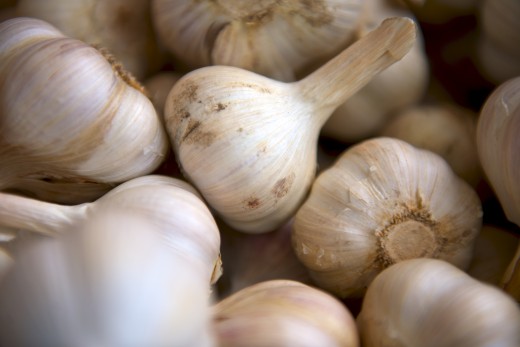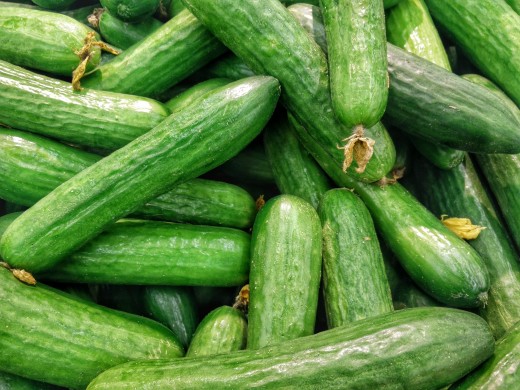12 Home Remedies to Cure Toothache

From mild soreness and sensitivity to an unbearable pain, toothaches vary greatly and they can cause a severe pain around your jaws, neck, and any other part of your body. Dentists claim that the major causes of unexpected toothaches, especially those that happen after midnight, are an infection, cavities, an exposed tooth root, inflammation, gum disease, a cracked tooth, wisdom teeth growing in, a loose filling, and in rare cases a jaw joint disorder.
For me, there’s no pain worse than a toothache. I’ve been suffering from all types of tooth pains for my entire life and there were times when the nearest hospital where I could find a dentist was more than 100 miles away from me. I’m an avid hiker and often spend my weekends away from the city, but my teeth don’t care about it and sometimes a toothache strikes unexpectedly in the middles of my trip. I’ve tried tons of natural remedies over the years and now can confidently share some of the most powerful and effective ones.
1. Peppermint oil
When it comes to taming a severe tooth pain, a little dose of all-natural peppermint essential oil will do the trick. Menthol, which is naturally found in peppermint leaves, are manufactured each year and it’s often the key ingredient in over-the-counter painkillers, as well as pain-relieving creams, gels, sprays, and rubs. It boasts powerful anti-bacterial and pain-relieving properties that can fight any infection in your mouth and relieve the pain in your teeth.
Ligand, a kind of molecule present in the menthol, belongs to the G-protein known as the kappa opioid receptor that’s one of 4 receptors that bind opiate-like substances in your brain and regulate the effects of those substances. One of those effects is the perception of pain, including tooth pain. KOR agonists have long been used medically as the effective analgesics. Menthol is one of those KOR agonists, naturally occurring in mint, which works as an efficient pain blocker.
There are two ways to use peppermint to cure a toothache:
- Combine 10 to 15 drops of natural peppermint essential oil with 2 tablespoons of olive oil (or grapeseed oil.) Soak a cotton ball in the mixture and place around the aching tooth. You can also soak a cotton swab in the mixture and rub the gum surrounding the aching tooth. Feel free to repeat as needed. It’s crucial to dilute peppermint essential oil to avoid irritation. Don’t apply pure peppermint oil directly to the sore tooth.
- If you’re not cold seThere are two ways to use peppermint to cure a toothache: sensitive, try out the following method to relieve tooth pain: Place a peppermint tea bag in the fridge and leave it for at least 25 minutes. Put the tea bag directly onto the sore tooth for about 15 minutes. Although this method doesn’t tame the pain for long, it works well as an instant pain reliever. Repeat the procedure if needed.

2. Garlic
Garlic is my lifesaver and it’s not only about treating a toothache. Garlic is one of the most powerful natural antibiotics found in nature that has been used to treat serious diseases for thousands of years, including plague in the 1700s. It boasts antiviral, antifungal, antimicrobial, and antioxidant properties. Crushed garlic is known to be an effective painkiller. Not only can it help you tame the sore tooth, but it can also help to fight inflammation and reduce swelling.
Finely chop one garlic clove and leave it for at least 10 minutes, giving it enough time to jump start the allicin. Place a tiny amount of the mixture directly onto the aching tooth and leave on for 2 to 3 minutes. Remove and rinse your mouth with warm salt water. Be careful, though and don’t overdo it. Garlic can burn the gum so don’t apply too much of it and repeat the procedure not more than 2 times a day. Warm salt water will help you get rid of the burning sensation, infection, and any bacteria left in the mouth.
If you have garlic powder, you can take advantage of it as well. Mix a tiny bit of the powder with the same amount of black salt or table salt. Apply the paste directly onto the sore tooth to reduce the pain.
3. Cloves
Eugenol naturally found in cloves is a famous antiseptic and a powerful painkiller. Doctors used cloves to treat the aching teeth thousands of years ago, and today eugenol is used in an extracted purified form in a modern dentistry. It has been shown to act on specific pain receptors, block them, and therefore eliminate the sensation of pain.
Additionally, cloves have antibacterial, anti-inflammatory, and anesthetic properties that help to fight infection and alleviate a tooth pain. There are 3 forms of cloves and 3 methods of using it to combat all types of dental pain, including the tooth nerves, sore gums, cavities, and mouth ulcers:
- Clove oil: Start with rinsing your mouth with warm salt water to kill the bacteria. Combine several drops of organic clove oil with ½ teaspoon of any type of olive oil. Then soak a cotton ball in the oil mixture and put it gently yet firmly onto the aching tooth or the affected gum. You can also drop a small amount of clove oil onto a cotton swab and dab it directly around the hurting tooth.
- Whole cloves: After rinsing the mouth with warm salt water, place 2 to 3 whole cloves in your mouth and slightly press near the affected area. Allow them to soften and chew them for several minutes to release the oil. Remove the cloves from the mouth and don’t drink and eat anything for at least 30 minutes after the procedure.
- Ground: Apply a pinch of the ground cloves between the sore gum and cheek, around the aching teeth. Don’t rinse your mouth and don’t eat and drink anything for 20 minutes. The pain should disappear within a few minutes.

4. Onions
Onion is a great alternative to garlic. It offers antimicrobial and antiseptic properties and is known to fight bacteria in the mouth that worsens the aching tooth. Many dentists recommend their patients to place a piece of raw onion over the affected area when a toothache strikes in the middle of the night. Make sure you place a juicy piece of an onion since it’s the juice that works as a natural analgesic.
You can also use onion bags to treat the sore tooth. Fill a small cotton bag with grated juicy onion and place directly onto the tooth. Leave for about 5 minutes and remove. If you are able to chew a raw onion, then do it for a few minutes to reduce the pain. Rinse your mouth with warm salt water to eliminate the odor.
5. Turmeric
When it comes to natural remedies, it seems there is nothing that turmeric can’t do. This amazing herb boasts potent healing properties and has long been used to treat the aching teeth in a natural way. Apart from its healing abilities, turmeric provides strong antibacterial, analgesic and antiseptic properties that can help to eliminate the pain in its tracks. It’s an effective treatment for the gum and tooth infections along with excruciating abscesses.
Add a teaspoon of organic turmeric powder to a bowl with a teaspoon of water to create a healing paste. Once it’s ready, dip a cotton ball into the mixture and place it on the aching tooth. If you have the highly sensitive gums, don’t apply it directly to avoid irritation. Mix a dash of turmeric powder with a little amount of raw honey, and apply to the affected area. Raw honey also boasts powerful antibacterial properties, making it an excellent agent in the turmeric paste.

6. Cucumber
Cucumber is highly underrated when it comes to treating a toothache. Many people consider this vegetable to be an excellent addition to the homemade skincare products, but not a pain reliever. In reality, cucumber offers soothing and hemostatic effects, which aid in lessening the blood flow to the aching tooth, ultimately relieving and soothing the pain.
Slice a piece of fresh cucumber and hold it over the aching tooth for several minutes. If you’re not sensitive to cold, place a cucumber in the fridge first. You can also mash up juicy fresh cucumber and combine with a tiny bit of sea salt. Place the mixture around the sore tooth.
7. Vanilla extract
Vanilla extract is known for its analgesic and antiseptic properties, making it incredibly effective at reducing a tooth pain, albeit only temporarily. Just like cloves, vanilla extract is an excellent source of eugenol, which dentists often use as temporary fillings and to numb the pain.
Dip a cotton swab in pure vanilla extract and place it on the affected tooth. Leave for a few minutes and remove. Repeat 2 to 3 times a day until you tame the pain. Since vanilla extract contains a small amount of alcohol, it helps to numb the gums around the aching tooth. You can also gum a washcloth dipped in pure vanilla extract. It all depends on the intensity of the pain.
8. Thyme
The aromatic bush with small leaves, thyme isn’t only for your meals. It has scientifically been proven to provide some of the strongest antimicrobial abilities of all the essential oils. Fresh or dried thyme contains medicinal, antiseptic, and antifungal properties, which make it an effective pain killer. Dentists claim that thyme can ward off gum disease and tooth decay.
There are a couple of ways you can use thyme to treat your severe toothache. Here are some of the best ones tested and tried by me:
- Treatment pad: Fill a small bowl with warm water and add 8 to 10 drops of pure thyme essential oil. Mix and stir well. Soak a cloth and apply the part of it to the affected area to help you ease the pain.
- Thyme essential oil ointment: In a small bowl, combine together a tiny bit of gum relief ointment or cream and 5 to 7 drops of pure thyme essential oil. Apply the mixture to your aching tooth using your fingers.
- Chewing: Chew properly thyme for a few minutes to make a juice out of the leaves on the other side of the mouth, not on the aching tooth since the leaves can get into your affected tooth (especially if it’s open or broken) and could worsen the pain.
- Tea: Brew a cup of fresh thyme tea and sip it slowly to relieve your toothache. Make sure it’s not too cold or too hot.
- Rinse: If you can’t handle drinking the tea, simply rinse off your mouth with it. It will fight the bacteria in your whole mouth and relieve the inflammation and swelling in your aching tooth.
If you have hypertension or are pregnant, don’t use pure thyme oil for relieving a toothache. If you’re allergic to oregano, chances are you’re allergic to thyme too, so be careful. Don’t use thyme to treat the aching teeth in babies under 2 years old.
How to Cure a Toothache Fast
9. Guava leaves
Fresh guava leaves are renowned for their abilities to alleviate toothaches, and relieve the mouth ulcers and swollen gums. They have powerful antimicrobial, analgesic, and anti-inflammatory properties, and are high in flavonoids. Dentists and herbalists recommend using guava leaves in a paste form to keep a healthy oral hygiene due to their abilities to fight gum inflammation and maintain breath clean and fresh.
Simply chew 2 fresh guava leaves until the juice begin working to relieve the aching tooth. You can also add 5 to 6 guava leaves (dry ones are great too) into boiling water, and let it sit for 15 minutes. Leave the liquid to cool down to warm temperature. Add a dash of sea salt to it and stir well. Rinse your mouth with the mixture a few times a day.
10. Acupressure
Lesser known remedy, acupressure can also be used to relieve a toothache by stimulating the release of endorphins renowned as those amazing feel-good hormones. But if you are pregnant, it’s best to skip this method. If not, there are 3 effective methods to relieve a tooth pain using acupressure, such as:
- Press a point on the back of your other hand using your thumb, where the base of the index finger and thumb meets. Add a moderate pressure for around 10 minutes.
- Slightly press the area behind the outer ankle bone and hold it for around a minute. Without pressing too hard, apply pressure firmly using your fingertip.
- Use your forefinger and thumb to grasp the toenail area of your second toe of your corresponding foot. Add a moderate pressure to the toe side that is furthest from your big toe. Hold the pressure for 2 minutes, or until the pain disappears.
11. Warm salt water
Even though this method is mostly used to remove the bacteria from the entire mouth, it can relieve the pain as well. Dentists recommend their patients to rinse the mouth with warm salt water or strong black tea after a tooth removal. However, I’ve tried this method to treat my severe midnight tooth pain and it worked, though temporarily. Add 2 teaspoons of salt to a glass of warm water and stir until the salt is entirely dissolved.
You can also combine salt and garlic and apply the paste onto the area around your aching tooth. Leave for a few minutes and rinse it off.
12. Tea tree oil
If you’re looking to relieve a wisdom tooth pain, tea tree oil is one of the best natural remedies to try. Historically used in the Aboriginal medicine, tea tree oil has strong anti-inflammatory, antibacterial, and analgesic properties. Rub the oil directly on your aching tooth and painful gums to relieve the pain and fight inflammation. Massage the aching area for 2 minutes for doubled effects.
You can also combine a half teaspoon of olive oil with a few drops of the tea tree oil, and use a cotton ball to apply the mixture onto the painful wisdom tooth or the aching tooth.
Or, add a few drops of the oil to a glass of warm water and rinse your mouth twice a day or when the pain strikes. Make sure you don’t swallow the mixture.
Conclusion
If you’re anything like me, there is no pain that can make you suffer in a throbbing uncomfortable manner as long as a toothache. Luckily, you can relieve it by using a few natural ingredients that you probably already have in your pantry. I really speak from my own experience, having tried hundreds of natural remedies to cure a toothache over the years.
However, while these remedies will be more likely to tame your tooth pain, remember that it’s temporary. You can’t permanently cure it without a professional dentist. Make sure you visit them as soon as possible, as there are so many people who die from a seemingly common toothache due to serious complications.
© 2017 Haider








